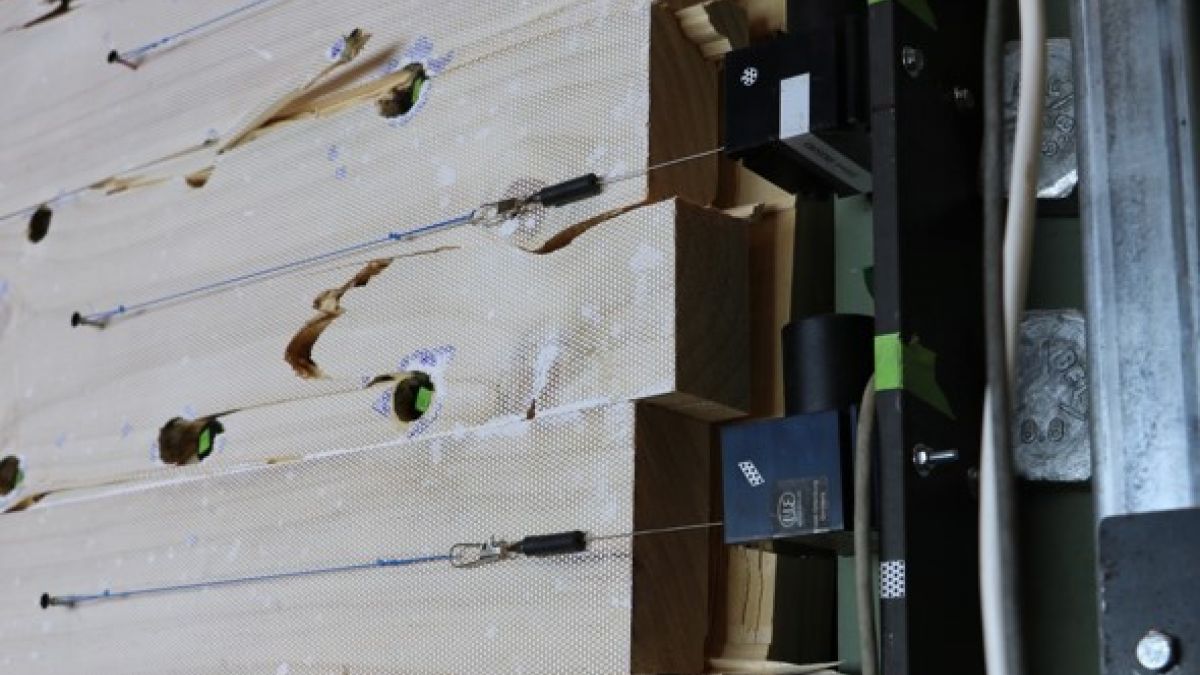
This research will investigate the performance of structural post-tensioned timber connections exposed to fire. Understanding of timber structures in fire is growing. Simple solutions exist for simple elements: beams, columns, floors, etc. However, most of these methods are based on standard fire exposure. In practice the charring rate depends on the specific fire exposure and residual timber continues to degrade in the decay phase of the fire. Thus, relying on standard fire resistance tests is not sufficient for these structures. The charring behaviour of timber in real fires must be accounted for, even after the building contents have burned away.
Connection behaviour in timber in fire conditions has typically focused on tension-type connections. However, beam-column connections are more realistic and their behaviour in fire will introduce a variety of actions, including moments into the connection. Post-Tensioned Timber buildings are a well-established structural form using large section timber elements with unbonded steel tendons and optional energy dissipaters to enable fast erection, low damage and larger spans. Although design principles for these structures have been developed for seismic and gravity load cases, further study is needed to develop design principles for the structural fire case.
Specifically, the performance of connections and the influence of detailing on the behaviour of the connection and full frame performance will be investigated. This is important because we want timber structures to be resilient in fire so that they can be designed to achieve structural stability during and following fire. This is especially important in tall timber structures where collapse must be avoided, so that timber structural systems can be easily repaired following fire.
Experiments will be conducted on typical full-scale timber connections, and then modelled with finite element software. The experimental and numerical investigation will lead to the development of simplified design rules for these connections under fire conditions.
Research Showcase
Conference Papers
Horne P, Palermo A, Abu A, Moss P. Implications of seismic design detailing on the fire performance of Post-Tensioned Timber frames. In: Proceedings of 2019 Pacific Conference on Earthquake Engineering. Auckland, New Zealand; 2019.
Horne P D, Abu A K, Palermo A G, Moss P J. PERFORMANCE OF POST-TENSIONED TIMBER BEAM-COLUMN CONNECTIONS IN FIRE. In: Proceedings of Applications of Structural Fire Engineering 2019. Singapore; 2019.
Conference Presentations
Implications of seismic design detailing on the fire performance of Post-Tensioned Timber Frames presented at 2019 Pacific Conference on Earthquake Engineering in Auckland New Zealand, April 2019.
Performance of Post-Tensioned Timber Beam-Column Connections in Fire presented at Applications of Structural Fire Engineering 2019 in Singapore, June 2019.
Project Researchers
- Investigate the performance of structural timber connections exposed to re.
- Develop design principles for beam- column timber connections.
- Investigate tendency for sustained charring and degradation of timber elements during the decay period of re.


